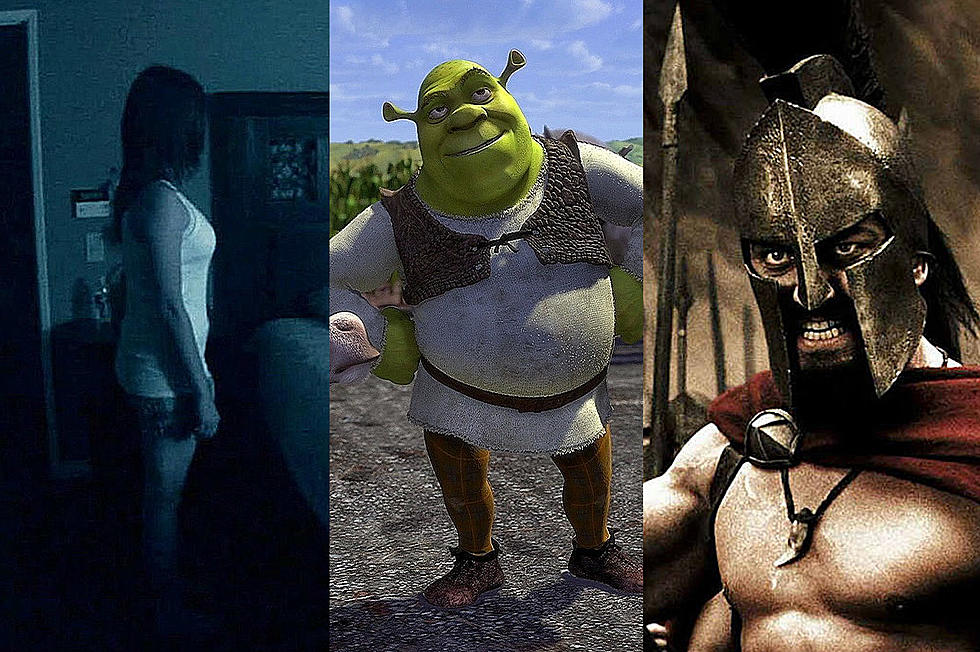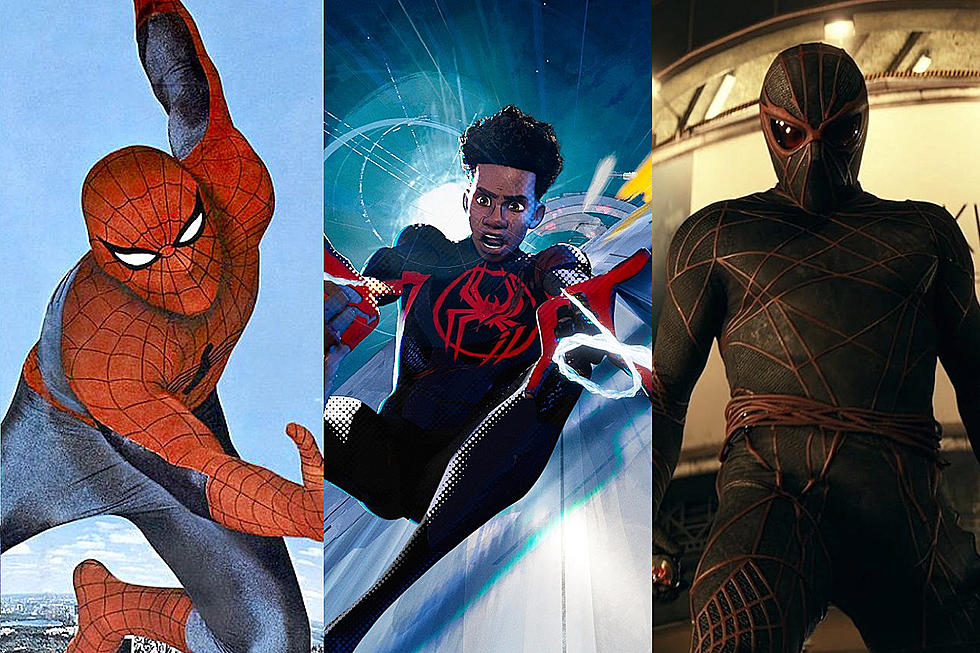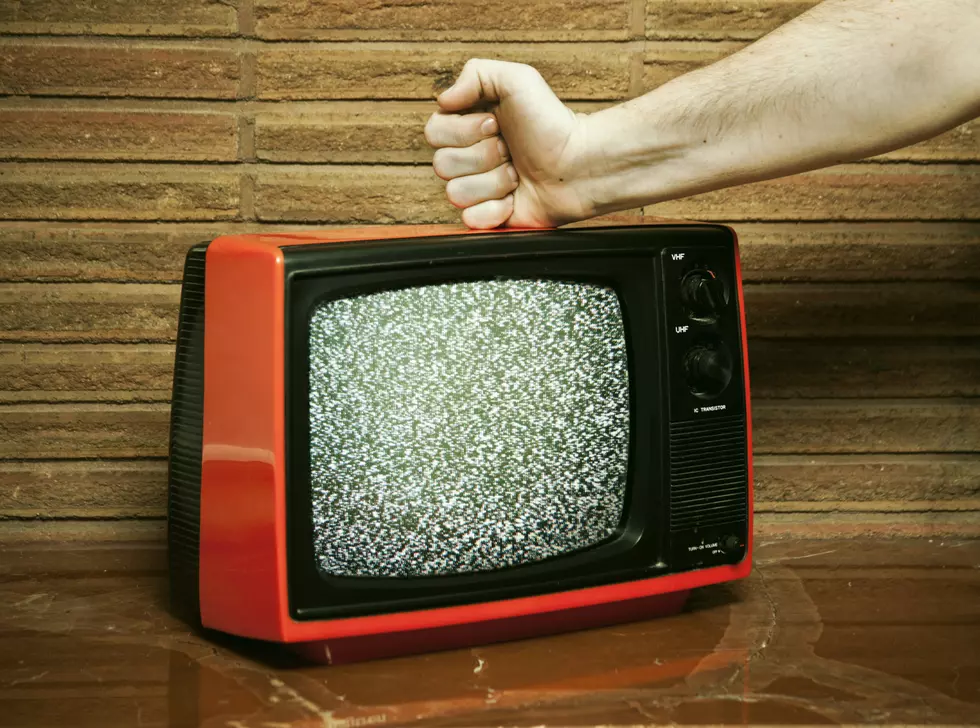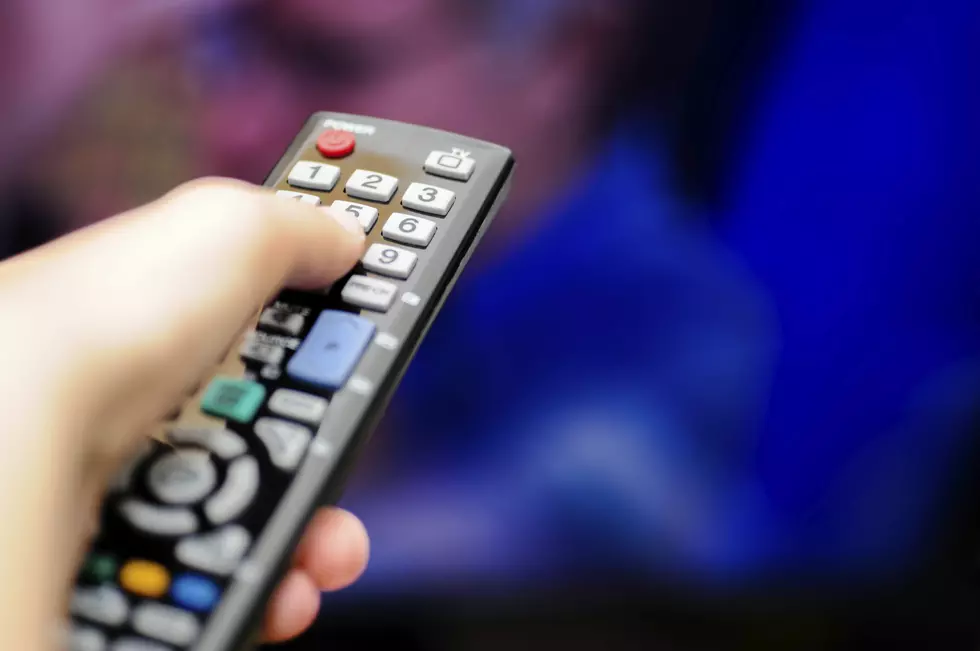
Have Comics Changed Too Much to Match Their Movie Adaptations?
Believe it or not, there was a time when Iron Man was a C-list superhero who no one outside of a small niche particularly cared about.
And then Robert Downey Jr. was cast in 'Iron Man' and the Marvel cinematic universe exploded, instantly becoming one of the definitive franchises of the 21st century. Now, you can walk into any store and buy Iron Man bedsheets. Your mother can tell you all about Thanos. A character named Rocket Raccoon is poised to take over the summer in 'Guardians of the Galaxy.' The Marvel universe used to be niche and now it's not. Marvel Studios did the impossible: it took a line-up of its lesser-known characters and transformed them into cinematic icons on par with Spider-Man and Wolverine.
And this is where we get to the important part: despite all of their big screen successes, the comic book industry hasn't seen that much change in terms of sales. Only the smallest fraction of people who made 'Captain America: The Winter Soldier' a smash hit actually buy Captain America comics. Marvel (and DC comics, too) wants movie fans to buy comics. They want people to see 'The Avengers' and head out to their local comic shop and pick up some issues. In fact, they've gone out of their way to manipulate and modify the Marvel universe to make it more accessible to newbies, wildly changing characters and teams and rewriting comic lore to make the jump from film to paper easier.
Of course, the big concern is whether or not this approach attracts new readers or simply alienates old readers. Heavy-hitters like Spider-Man, Batman and the X-Men have generally stayed the same over the years, but the same cannot be said for other lesser known DC and Marvel characters. Some of these changes have been perfectly fine. Some have made their series better. Some have been downright disastrous. Let's go on a whirlwind tour of some of the most notable attempts to align the comics with their films, shall we?
Tony Stark Gets Snarky
It all began with Tony Stark. When 'Iron Man' turned out to be a massive blockbuster no one saw coming, Marvel comics reacted as quickly. Within months of the film's release, the comic version of Tony was sporting facial hair that closely matched Robert Downey Jr.'s trendy goatee and his dialogue became snarky and sarcastic, capturing the acidic wit Downey brought to the character. Suddenly, Iron Man was a charming quip-machine who represented his cinematic counterpart more than the character who had existed on the page before. There's nothing especially awful about this -- there's a reason people love Downey's take on the character and it works well on the page -- but it was a jarring transition. But to be fair, no one seems to even notice or care these days. Like in the movies, Iron Man's roguish charm is the perfect counterpoint for Captain America's stoicism.
Transition Grade: B (It's tough to argue with something that works.)
Hal Jordan Goes Ryan Reynolds
It's easy to see that Warner Bros. was attempting to ape 'Iron Man' with their disastrous 'Green Lantern' movie. By casting an effortlessly charming leading man as a B-list superhero with a complicated mythology, the goal was to make rings fueled by willpower and blue-skinned Guardians palatable to the mainstream. The film was a critical and financial failure, but its aftershocks could be felt throughout throughout the comic book world. When DC comics relaunched its entire line with the "New 52," Hal Jordan was no longer the serious soldier and leader of men -- he was Ryan Reynolds, a wisecracking goofball who was reintroduced as a foil for the ever-serious Batman. This was even more jarring than the Iron Man change because much of Green Lantern's continuity survived the New 52 reboot, making his new behavior all the more inexplicable. Now that the movie is a distant nightmare, Jordan seems to have slowly gone back to his older ways ... but that will surely change when the character is reintroduced in a 'Justice League' movie.
Transition Grade: C- (The faster we forget this, the better.)
Bruce Banner and Tony Stark: Science Buddies
One of the unexpected joys of 'The Avengers' was watching Bruce Banner and Tony Stark bond over their mutual love of science. Their instant bromance exploded all over the internet, leading to countless "science buddies" memes and all kinds of stories about where the two of them were going when they drove off together at the end of the film. Marvel chose to capitalize on this newly beloved relationship in the comics. It's no accident that the first story arc in the the newly relaunched 'Avengers Assemble' series dealt with these two embarking on a semi-friendly adventure that tested their scientific philosophies against one another. In fact, all of this led to Banner being reestablished as one of the Marvel universe's foremost geniuses after years of playing backseat to his big green alter ego as he travelled the galaxy.
Transition Grade: A- (There's nothing wrong with new character dynamics!)
The Great Nick Fury Semi-Reboot
This is where things get a little weird. The Nick Fury of the Marvel cinematic universe is based on the Samuel L. Jackson-inspired Nick Fury of the Marvel Ultimate universe, which is completely separate from the standard Marvel comic book universe (known as Earth 616). Comic books, right? Anyway, when Jackson's Fury started to become a major player in the cinematic Marvel adventures, the original recipe Marvel comics bent over backwards to reconcile everything, resulting in a change that still has comic fans groaning. We first meet the character of Marcus Johnson in the miniseries 'Battle Scars,' but over the course of a wild adventure, he learns his actual birth name: Nick Fury Jr. And wouldn't you know it, Nick Fury Jr. bears a striking resemblance to Samuel L. Jackson and he loses an eye on his first mission and he's given a big job at S.H.I.E.L.D. despite having zero experience in covert ops. Yep, over the course of a single lame miniseries, Marvel forced a new Nick Fury into existence. And for the record, this miniseries also transplanted Agent Phil Coulson (who was created for the films) into the comics, where he's still a major player in Marvel universe and pops up across countless titles.
Transition Rating: D (Can we pretend this never happened?)
Green Arrow Hits the Reset Button
When DC relaunched with the New 52 (see above), one of the weakest new series was 'Green Arrow.' The book struggled through its opening storyline and a new creative team was brought on a few months later, but there wasn't much improvement. Both takes on the character felt tired and dull -- no one knew what to do with the character. Enter 'Arrow,' The CW's massively popular take on Oliver Queen and his bow-wielding alter ego. As the show grew in popularity, DC reacted accordingly. They handed the reins of the series over to the superstar writing and art team of Jeff Lemire and Andrea Sorrentino, who opened their run on the series by killing off the majority of the book's supporting cast and literally wiping the slate clean, rendering the previous year-plus of issues null and void. It was the perfect jumping-on point for new fans who were intrigued by the TV series and an opportunity to remake 'Green Arrow' into one of DC's premiere books. And it worked! But things are getting shaken up again: Lemire and Sorrentino are departing the series soon and 'Arrow' executive producer Andrew Kreisberg and writer Ben Sokolowski are taking over and they plan to make the comic more like their show. That's ... well, we don't know what that is. We'll get back to you in a few months.
Transition Grade: A (But let's see if they screw the pooch on this one.)
A Kinder, Gentler John Constantine
This is where we'll dip our toes into Conspiracy Theory Land for a moment, but the evidence is too much to ignore. With NBC bringing comics' greatest mystic John Constantine to the small screen and ignoring so much of what makes him him (his smoking habit, his sexuality, etc), DC's decision to retool the character in the comics makes a certain amount of shrewd sense. First, they reintroduced him to DC universe at large with series like 'Justice League Dark' and 'Constantine.' Then they cancelled his iconic and long-running 'Hellblazer' series, which lived over at Vertigo, the DC imprint for "mature" comics. As you'd expect, the Constantine of the main DC universe was miles away from the dark and complex Vertigo character. Now he hangs out with superheroes and feels ready to make the jump to lunch boxes and action figures any time now. All of this, just in time for his leap to TV. Hmm...
Transition Grade: ? (Ask us again when the show premieres.)
Spider-Man Rides His Cinematic Coattails
For over a year, 'The Amazing Spider-Man' comic series was cancelled and replaced with 'The Superior Spider-Man,' which told an extended story about Dr. Octopus switching bodies with his arch nemesis just as his old body dies, killing Peter Parker and leaving him in a young spider-powered body. The series was a success and for good reason: it was funny and weird and totally unlike anything else on the stands. But all good things must come to an end and Marvel timed the cancellation of 'The Superior Spider-Man' and the relaunch of 'The Amazing Spider-Man' to the arrival of 'The Amazing Spider-Man 2.' With Spider-Man hype at its highest point for the year, Marvel had no trouble making the new #1 issue of 'The Amazing Spider-Man' into a gigantic success. In fact, relaunching series with new #1 issues to coincide with new movies has become common practice in the comic book world, but Marvel managed to make it a bigger event than most. Also of note: Electro's new look bears a strong resemblance to Jamie Foxx's take on the character. Coincidence? Of course not.
Transition Grade: B- (It's completely harmless.)
Star-Lord Gets Pratted
With 'Guardians of the Galaxy' in theaters now, Marvel has launched a new series centered around space adventurer Peter Quill, played by Chris Pratt in the film. After its first issue, 'The Legendary Star-Lord' seems a solid-enough comic book, but you can tell that the marching orders were "make it more like the movie." Star-Lord/Peter Quill is a strange character with a convoluted and frequently retconned history, but he has never been a lovable goofball with a heart of gold. But Pratt, who excels at playing lovable goofballs with hearts of gold, is playing him that way and the comic follows suit. If Star-Lord was a more consistent or prevalent character over the years, these changes may feel like they matter more than they do. But at the moment? Eh. No biggie.
Transition Grade: B (Doesn't everything feel like it needs a little Chris Pratt?)
We can't predict the future, but we'll put good money on there being a new 'Ant-Man' series in 2015 ... and that Scott Lang will look and act a lot like Paul Rudd.
More From 92 Moose










